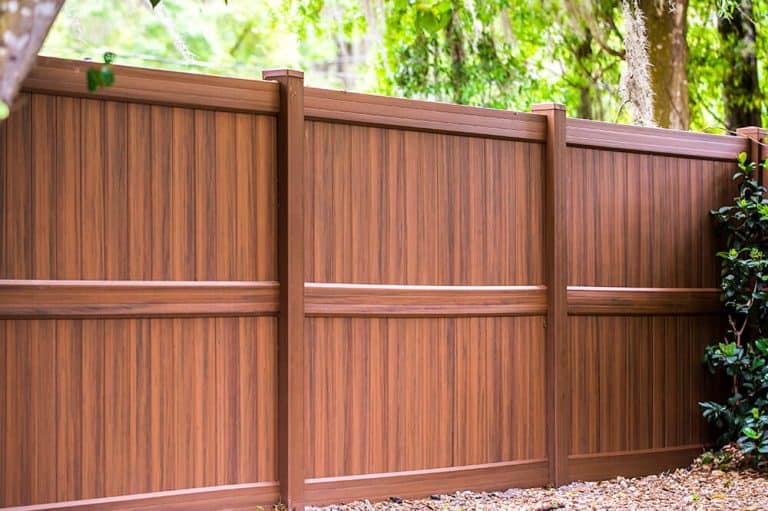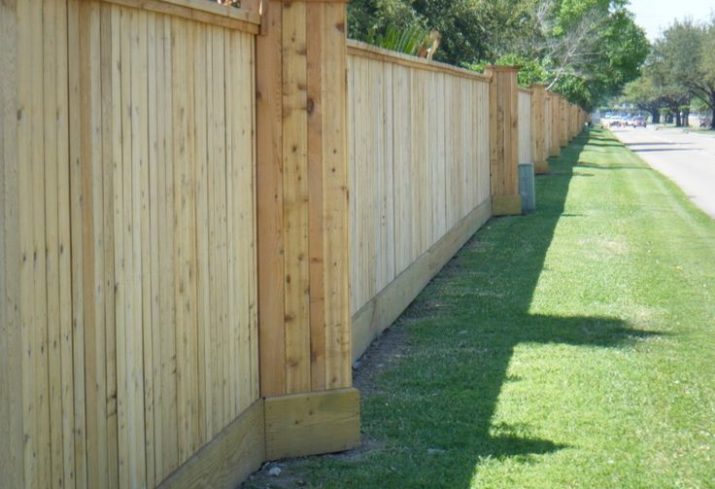How to Recognize Usual Problems That Require Immediate Fencing Repair
When it pertains to maintaining your fence, it is essential to find concerns before they come to be larger issues. Routinely inspecting for indicators of rotting wood, leaning panels, or rust can save you money and time over time. You could not understand just how climate and bugs can compromise your fencing's honesty. Allow's discover the typical indications that show your fencing requires instant focus, so you can maintain your residential property safe and secure and looking its ideal.
Indicators of Rotting Wood in Wooden Fences
Have you discovered your wooden fence looking a little bit shabby? If so, it may be time to check for indicators of decomposing wood. Examine the base of the messages and panels for soft places. If you push on the timber and it really feels spongy or crumbles, that's a clear indication of rot. Next, try to find staining or dark areas on the timber-- these commonly signal wetness damage. Take notice of any type of peeling paint or coating, as this can expose the timber to further degeneration. Additionally, a poignant, moldy scent can suggest fungal growth. Do not fail to remember to inspect joints and connections; if they hang or falling apart, the timber below is most likely jeopardized. By catching these indications early, you can prevent extra comprehensive damages and keep your fencing standing strong. Routine upkeep is key to extending the life of your wooden fencing.
Leaning or Tilting Fencing Panels
If you've observed your fence panels leaning or turning, it's vital to understand what triggered it. This concern might suggest underlying architectural damages that needs your focus. Allow's discover the common reasons and the repair service alternatives readily available to get your fence back fit.

Reasons For Leaning Panels
It's commonly a sign of underlying issues that need resolving when you discover your fence panels leaning or tilting. One usual cause is poor drainage; extreme water can deteriorate the dirt around the fencing posts, compromising their support. Another wrongdoer might be solid winds or tornados that press against the panels, especially if they're not effectively anchored. In addition, the all-natural settling of dirt with time can trigger blog posts to change, resulting in a tilt. Insects, like termites, can jeopardize the stability of wooden panels, creating them to lean as well. Ultimately, inadequate setup techniques might cause panels not being firmly set, leaving them susceptible to leaning under pressure. Address these concerns without delay to maintain your fencing's honesty.
Signs of Structural Damages
Noticing tilting or leaning fencing panels can be alarming, as these issues commonly indicate structural damage that requires immediate focus. When your fence begins to lean, it might indicate that the posts are changing or that the dirt around them has eroded. Pay close attention to voids between panels or articles, as these can also recommend instability. deck builder. In addition, look for cracks or splintering in the timber, which can compromise the general structure. It could compromise the integrity of the fencing if you discover corrosion or corrosion on steel components. Bear in mind, disregarding these signs can lead to extra severe damages down the line, so it's important to analyze the circumstance immediately and act prior to it aggravates
Repair Service Options Available

Corrosion and Deterioration in Metal Fences
If you own a steel fence, you might discover corrosion and rust creeping in gradually, specifically if it's exposed to dampness. These issues not only influence the appearance of your fencing yet can additionally jeopardize its structural honesty. To recognize corrosion, search for reddish-brown places or spots, which show the metal is oxidizing. Deterioration can spread rapidly if left unattended, weakening the fencing and leading to pricey repairs.To deal with corrosion and deterioration, you need to clean up the influenced areas with a cable brush and apply a rust-inhibiting primer. As soon as the primer dries out, think about repainting the fence with a weather-resistant paint to secure it better. Routine upkeep, such as checking for indications of rust and repairing paint as required, will help extend your fence's life-span. Addressing these concerns without delay assures your steel fence continues to be solid and aesthetically appealing for several years to come.
Fractures and Splits in Plastic Fencing

Reasons of Plastic Damage
Plastic fencing is popular for its toughness, yet it can still deal with cracks and splits because of various variables. One major reason is extreme temperature variations. When vinyl expands in the warmth and contracts in the cool, it can compromise the material with time. In addition, exposure to rough sunlight can bring about UV degradation, making the plastic fragile. Physical influences, like accidental accidents or hefty branches, can additionally produce fractures. Poor setup or using low-grade products can worsen these problems. Age plays a function; older plastic secure fencing is much more prone to damages. Regular evaluations can aid you identify these elements prior to they cause substantial problems. Take proactive procedures to assure your fence stays intact and solid.
Fixing Cracks Properly
Although cracks and splits in your vinyl fence can be worrying, resolving them promptly can prevent further damages and maintain the fence's appearance. Analyze the size of the crack. For tiny fractures, a vinyl repair service set often includes adhesive that can bond the edges, giving a seamless repair. Clean the area thoroughly before applying the adhesive, guaranteeing it sticks correctly. For bigger divides, you may need to utilize a vinyl patch. Cut the spot to dimension, apply adhesive around the edges, and press it firmly onto the split. Permit it to cure according to the producer's instructions. Normal maintenance and quick fixings can prolong your fence's life expectancy, keeping it looking terrific for years ahead.
Loose or Missing Out On Fence Blog Posts
Missing or loosened fence blog posts can undermine the security of your entire fencing structure. If you discover any posts wobbling or leaning, it's necessary to deal with the concern quickly. Look for any indications of movement, as this can bring about more damages gradually. You can easily examine the trouble by giving each message a gentle shake-- if it really feels unpredictable, it's time to take action.For missing out on messages, you'll need to change them as quickly as possible to preserve your fencing's stability. Make certain they're safely secured in the ground with concrete or crushed rock for added stability when you mount brand-new posts. If a post hangs, tighten it by including added assistance or driving it deeper right into the ground.Ignoring these issues can bring about bigger troubles, like voids in your fence or also total collapse. Keep an eye on your articles and remain aggressive concerning repair work!
Damages From Climate and Natural Elements
Climate and all-natural elements can ruin your fence, resulting in various types of damages that require punctual interest. Heavy rainfall can cause wood to rot, making it weak and unsteady. Snow build-up could bend or damage panels, while strong winds can uproot fencing messages or trigger sections to lean.If you notice fractures or splintering in wooden fences, it suggests drying because of intense sun direct exposure. Steel fencings can corrosion if safety finishes put on off, specifically in coastal or moist areas.Inspect your fence regularly after tornados or extreme climate to catch any damage see here now early. Dealing with these issues swiftly can save you from costly fixings down the line. Don't wait until a small trouble turns into a significant one; remain positive and keep your fence leading form to keep both functionality and curb allure.
Insect Infestation and Termite Damages
When you notice indicators of insect invasion or termite damage, it's important to act promptly to stop additional devastation. Look for mud tubes along your fencing or hollow-sounding wood, as these show termites are at work. You could likewise see tiny holes or frass, which is termite droppings resembling sawdust. If you find any one of these signs, it's time to assess the damage.Don' t wait until it's also late; insects can endanger your fencing's integrity. Inspect the surrounding area for beetles or ants, as they may be adding to the problem. If you believe an invasion, take into consideration speaking to a pest control professional to confirm and deal with the issue.Repairing or replacing afflicted areas of your fencing quickly not only recovers its strength yet likewise avoids insects from spreading out better. Keep cautious to maintain your property pest-free and protected.
Regularly Asked Inquiries
How Commonly Should I Examine My Fence for Damages?
You need to examine your fencing web link at the very least two times a year, ideally during springtime and loss. Routine checks aid you spot damages early, conserving you time and cash on repair work while preserving your residential property's look and safety.
Can I Fix a Fence Myself or Work With an Expert?
You can certainly repair a fence yourself if you have the right devices and skills. However, employing a professional warranties high quality work and conserves you time, particularly for complex repairs or considerable damages.
What Tools Are Needed for Fundamental Fence Repairs?
For standard fencing repair work, you'll require tools like a hammer, screwdriver, pliers, a saw, a degree, and measuring tape. deck builder. Depending upon the repair work, you may additionally need nails, screws, or replacement boards
Just How Much Does Fence Repair Service Commonly Price?
Fencing repair work prices differ commonly, however you can expect to pay between $200 and $1,500 relying on materials, labor, and extent of damages. It's wise to obtain multiple quotes for the very best offer.
When Is the Ideal Time of Year for Fencing Repair Works?
The finest time for fence repairs is during moderate weather, normally in springtime or very early autumn. You'll stay clear of extreme temperatures, making it easier to work and guaranteeing the products established effectively for lasting sturdiness (deck builder). Discovering leaning or tilting fence panels can be disconcerting, as these concerns usually indicate architectural damage that needs prompt focus. Loose or missing fencing articles can threaten the stability of your entire fence framework. Snow build-up might bend or break panels, while strong winds can uproot fencing posts or cause sections to lean.If you notice cracks or splintering in wood fences, it's a sign of drying out due to extreme sunlight direct exposure. Metal fences can rust if protective coverings wear off, particularly in seaside or moist areas.Inspect your fence regularly after tornados or extreme weather to capture any type blog of damages early. Fence repair service expenses vary commonly, however you can expect to pay in between $200 and $1,500 depending on products, labor, and extent of damages